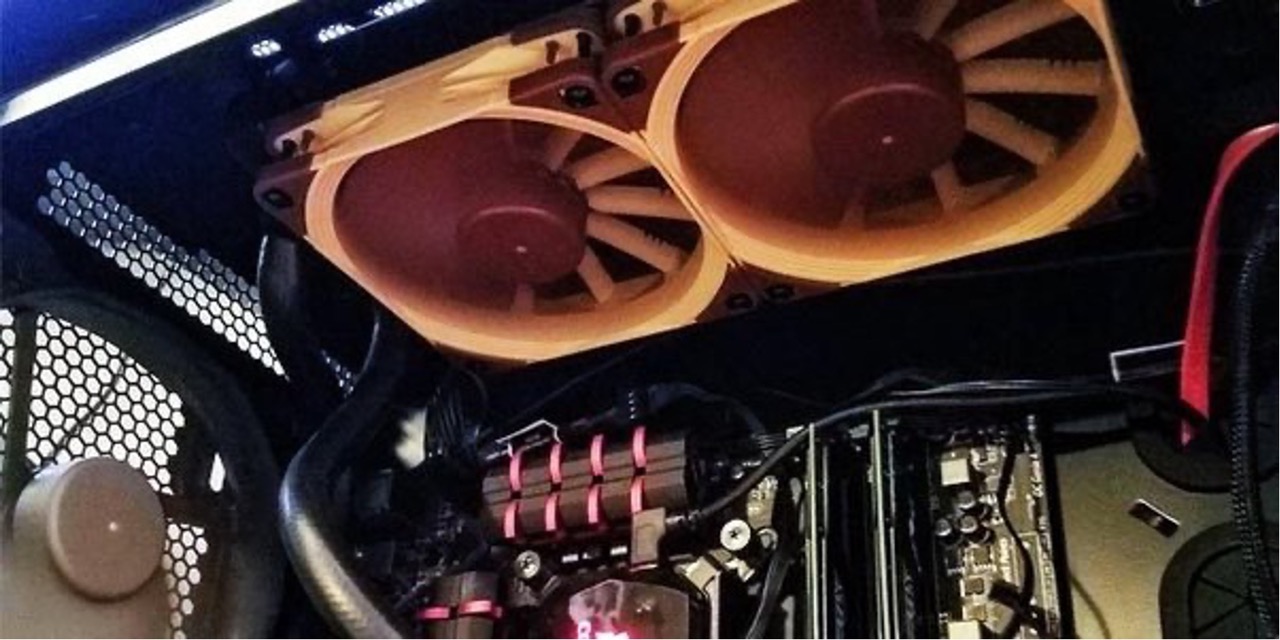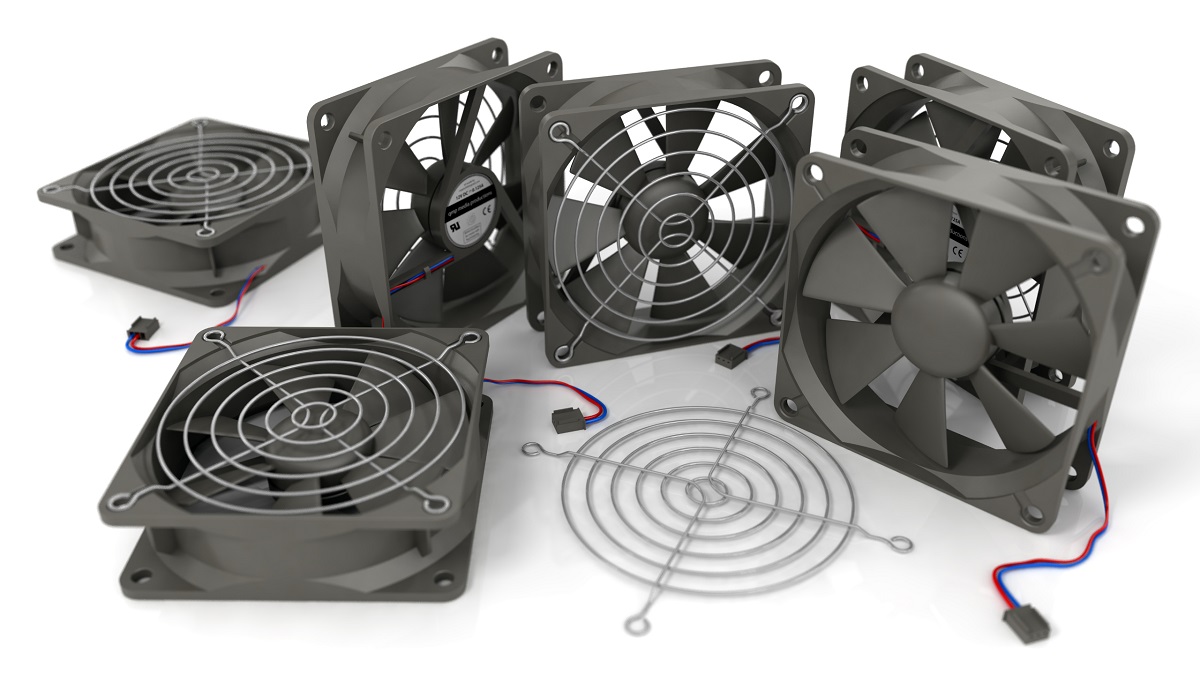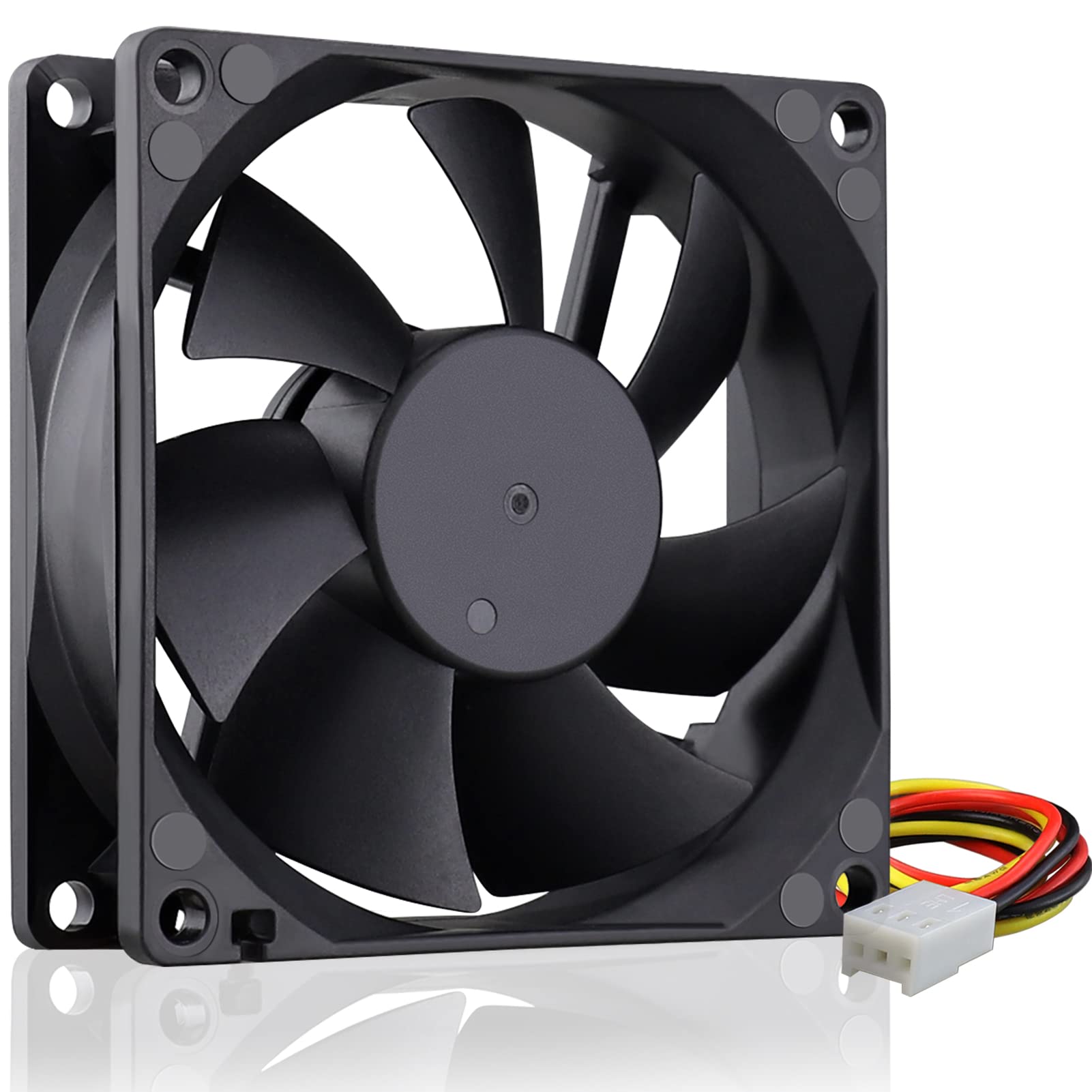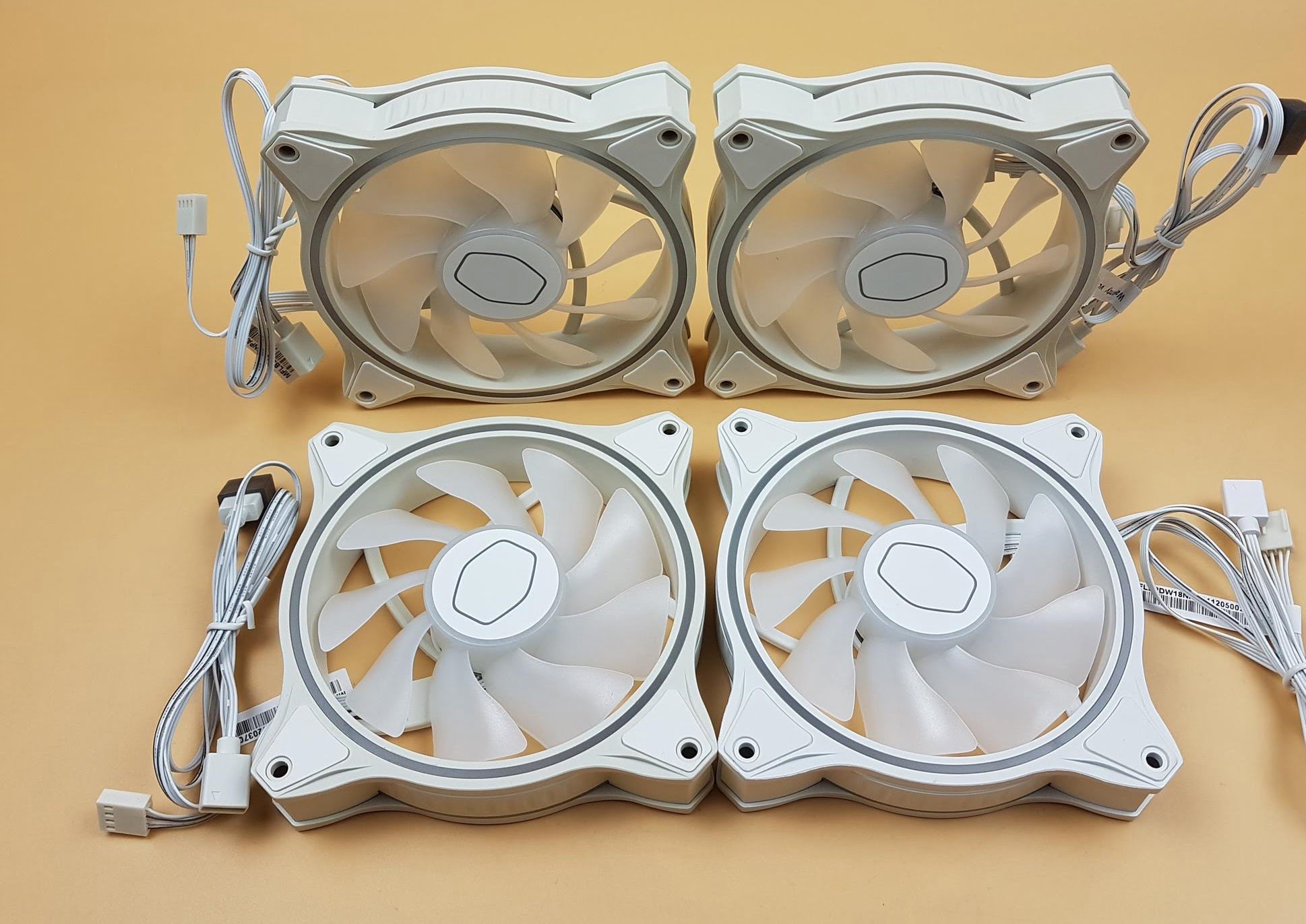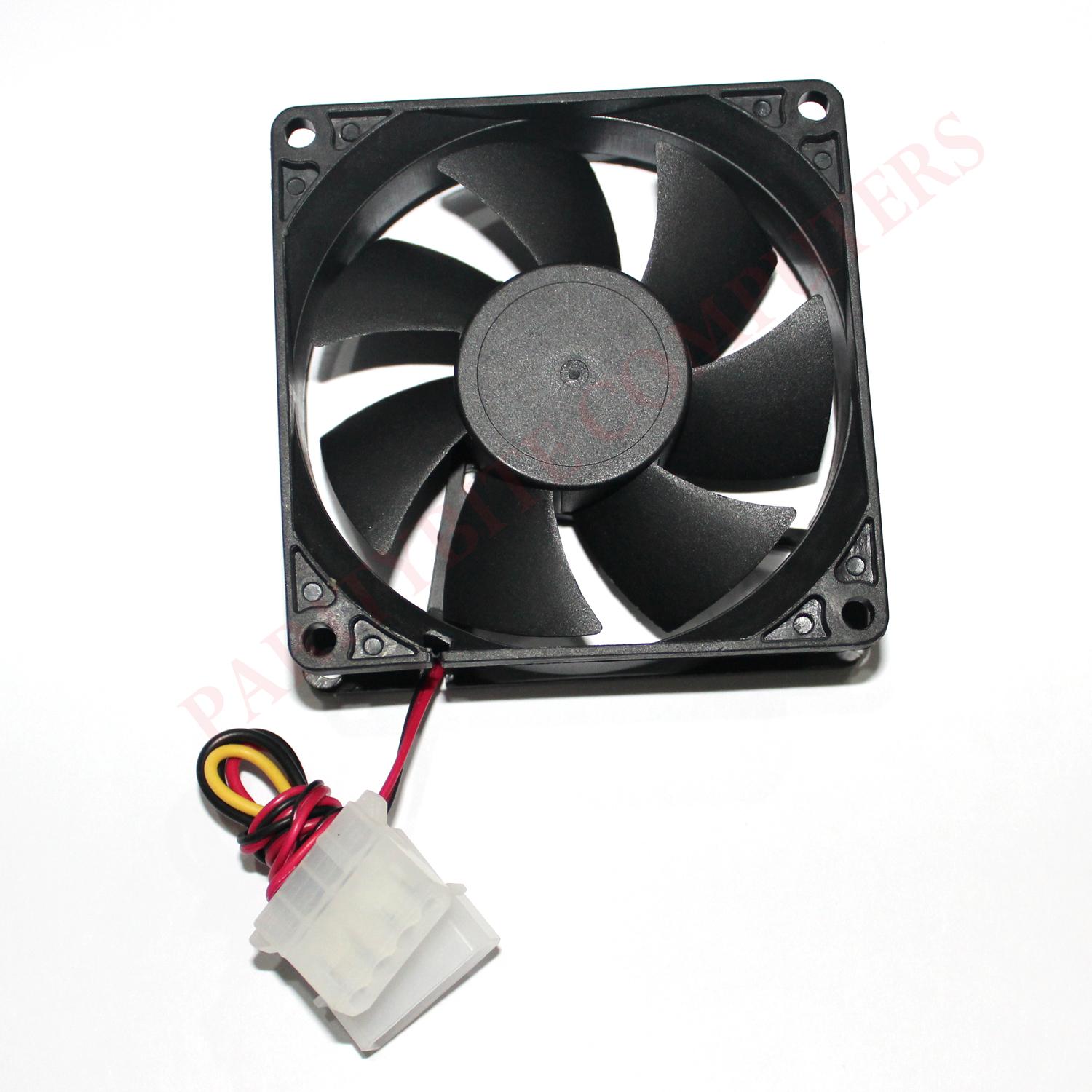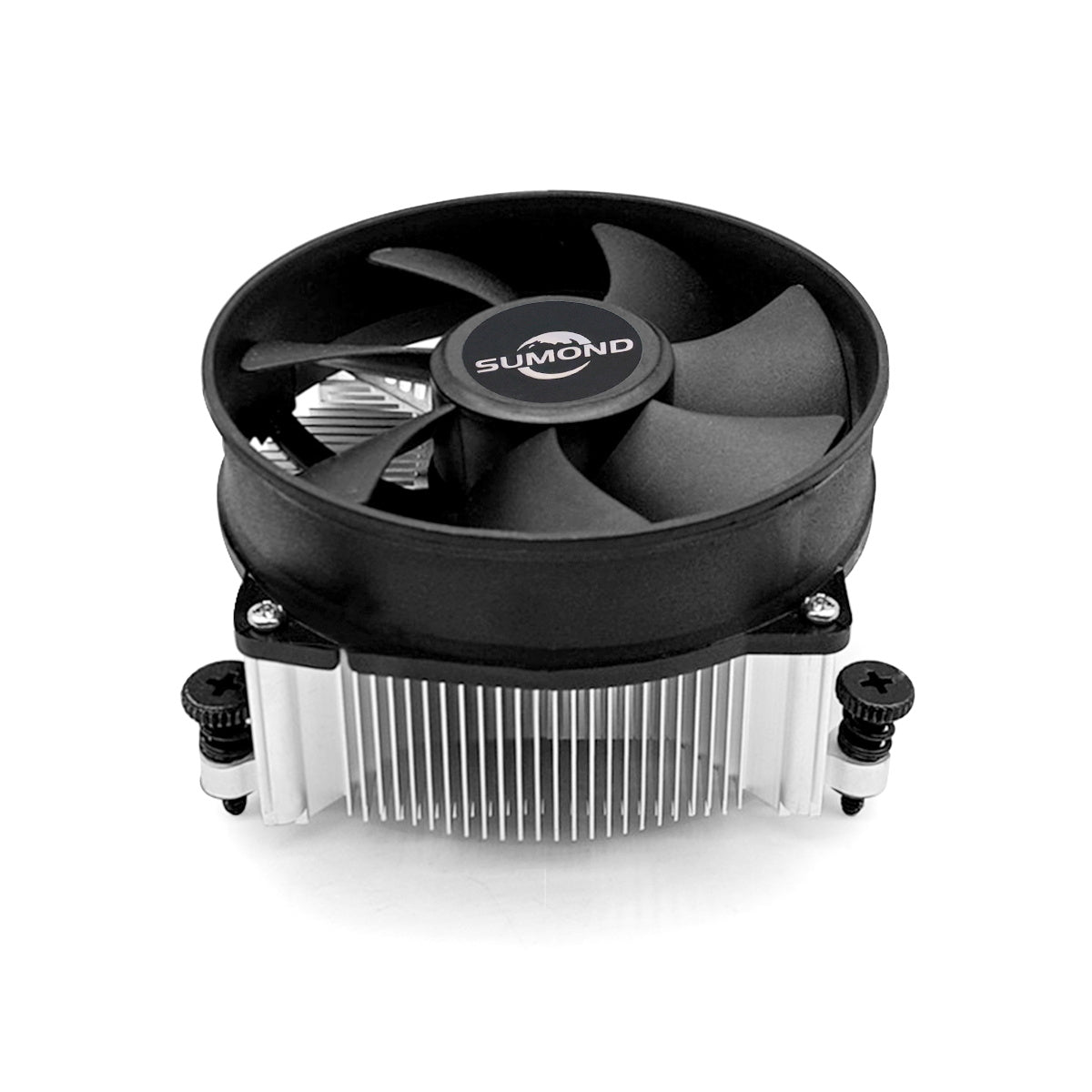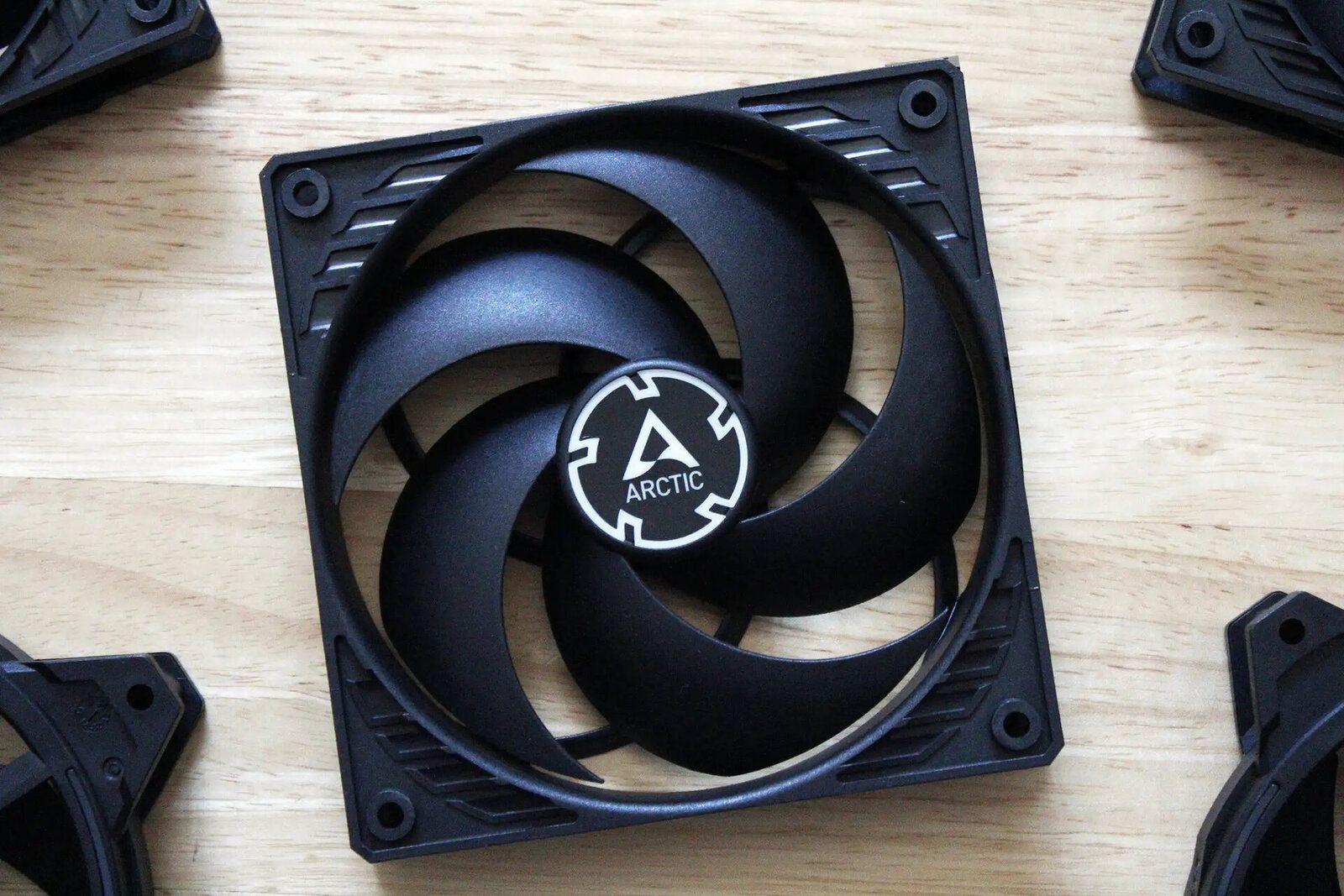Introduction
Welcome to the world of computer cooling! When it comes to maintaining optimal performance and longevity of your computer, proper cooling is essential. One crucial component in any PC cooling system is the case fan. These small but mighty fans help to circulate the air inside your computer case, ensuring that the components stay cool and operating smoothly.
One important factor to consider when selecting a case fan is its RPM, which stands for revolutions per minute. The RPM of a case fan determines how fast the blades spin, thereby controlling the airflow and cooling capacity. The right RPM for your case fan depends on various factors, such as the size of your case, the components inside, and the desired level of cooling efficiency.
For those who are new to the world of PC cooling, it is worth noting that case fans come in different sizes, including 80mm. The 80mm case fan is a popular choice for smaller cases or for situations where space is limited. Despite its compact size, it can still provide effective cooling when paired with the right RPM.
In this article, we will explore the importance of RPM in an 80mm case fan and provide recommendations for the ideal RPM range. By understanding the role of RPM and selecting the appropriate range for your 80mm case fan, you can ensure optimal cooling performance and enjoy a more stable and reliable computer system.
What is a case fan RPM?
Before we dive into the specifics of an 80mm case fan RPM, let’s first understand what RPM actually means. RPM, or revolutions per minute, refers to the number of complete rotations a fan’s blades make in one minute. It is a crucial metric used to measure the speed at which the fan operates and determines the airflow it can generate.
The RPM of a case fan directly impacts its cooling performance. A higher RPM translates to faster-spinning blades and greater airflow, resulting in better heat dissipation. On the other hand, a lower RPM indicates slower blade rotation and lower airflow, which may lead to inadequate cooling.
It is important to note that RPM alone does not determine the overall cooling efficiency. Other factors, such as the design of the fan blades, the fan’s size, and the airflow pressure, also play a role in cooling performance. Nonetheless, selecting the right RPM range for a case fan is crucial in achieving the desired cooling results.
Case fans typically come with different RPM options, allowing users to choose the appropriate speed based on their specific cooling needs. Some case fans have fixed RPM settings, while others offer adjustable options to customize the airflow to suit the system requirements.
Understanding the importance of RPM in case fans is key to making an informed decision when selecting the right fan for your computer system. In the next section, we will explore the specifics of an 80mm case fan and its RPM range to determine the optimal cooling solution for your needs.
Factors to consider when choosing a case fan RPM
When it comes to selecting the appropriate RPM for your case fan, several factors should be considered. Each factor plays a significant role in determining the ideal RPM range that will provide efficient cooling while maintaining a balance with noise levels and power consumption. Let’s take a closer look at these factors:
- Case Size: The size of your computer case is an important consideration when choosing the RPM for your case fan. Smaller cases often have limited space for airflow, requiring higher RPMs to ensure adequate cooling. Conversely, larger cases with better ventilation may not require high RPMs to achieve similar cooling results.
- Component Heat Output: The heat output of the components inside your computer also affects the RPM you should choose for your case fan. High-performance processors and graphics cards generate more heat, warranting higher RPMs to effectively dissipate that heat. Consider the power requirements of your components and ensure the case fan RPM can handle the heat load.
- Noise Level: The RPM of a case fan directly contributes to the noise it produces. Higher RPM fans tend to be noisier than lower RPM fans. If you prioritize a quiet computing experience, you may opt for lower RPM fans or look for models that offer noise reduction features like rubber pads or improved bearing designs.
- Power Consumption: It’s essential to consider the power consumption of your case fan, as higher RPM fans often require more power to operate. If you are mindful of energy efficiency or have power limitations in your system, choosing a lower RPM fan can help reduce power consumption without sacrificing cooling performance.
- Budget: Your budget also plays a role in selecting an appropriate RPM for your case fan. Higher RPM fans with advanced features typically come at a higher price point. Consider your budget constraints and strike a balance between performance and cost to find the most suitable RPM range for your needs.
By considering these factors, you can make an informed decision about the RPM range that will best suit your computer system’s cooling requirements. In the next section, we will delve into the specifics of 80mm case fans and explore the recommended RPM range for optimal cooling performance.
What is an 80mm case fan?
An 80mm case fan is a type of cooling fan that measures 80mm in diameter. It is one of the most common and widely used sizes of case fans, known for its compact dimensions and versatility. While larger case fans are popular for their ability to move large amounts of air, 80mm case fans excel in tight spaces and smaller computer cases where airflow might be limited.
Typically, an 80mm case fan consists of a motor, blades, and a frame. The motor powers the rotation of the blades, and the frame secures the fan to the computer case. The blades of an 80mm case fan are designed to generate airflow and direct it towards the critical components inside the case, such as the CPU and graphics card.
Despite their smaller size, 80mm case fans can provide sufficient cooling for many computer systems. They are commonly used as exhaust or intake fans, depending on the specific cooling needs and the layout of the computer case. With their compact form factor, 80mm case fans can fit in various locations within the case, including rear exhaust openings and front intake areas.
When selecting an 80mm case fan, it is essential to consider the specific requirements of your computer system. Factors such as the available space in your case, the component heat output, and the desired level of cooling performance will influence your choice.
Now that we understand what an 80mm case fan is and its general characteristics, let’s move on to explore the importance of RPM for optimal cooling performance in this particular fan size.
The importance of RPM for an 80mm case fan
The RPM of an 80mm case fan is of great importance when it comes to its cooling performance. Since the size of an 80mm case fan restricts the amount of air it can move compared to larger fans, the RPM becomes a critical factor in determining the airflow and cooling efficiency.
When the RPM of an 80mm case fan is higher, the blades rotate at a faster speed, resulting in increased airflow. This increased airflow helps to remove heat from the critical components inside the computer case more effectively. Higher RPM fans are particularly beneficial in systems with high heat output or limited ventilation.
Conversely, a lower RPM in an 80mm case fan means reduced airflow. While this may not be suitable for high-performance systems or those with significant heat output, it can be a desirable choice in situations where noise reduction is a priority. Lower RPM fans tend to produce less noise, offering a quieter computing experience.
Choosing the appropriate RPM for an 80mm case fan requires striking a balance between cooling performance, noise level, and power consumption. It is crucial to consider factors such as the airflow requirements of your components, the available space in the case, and your personal preferences.
By selecting the right RPM range for your 80mm case fan, you can achieve optimal cooling performance while maintaining a suitable noise level. This ensures that your computer components stay within safe operating temperatures, preventing overheating and potential damage.
In the next section, we will provide recommendations for the ideal RPM range for 80mm case fans, taking into account various factors to help you make an informed decision for your cooling needs.
Recommended RPM range for 80mm case fans
When it comes to determining the ideal RPM range for an 80mm case fan, several factors should be considered, such as the case size, component heat output, noise level preferences, and power consumption limitations. While the recommended RPM range can vary depending on individual system requirements, there are some general guidelines to consider.
For most standard computer systems, an RPM range between 1500 and 2500 RPM is a good starting point for 80mm case fans. This range strikes a balance between cooling performance and noise level, providing adequate airflow to help dissipate the heat generated by the components inside the case.
If noise reduction is a top priority and you can tolerate slightly higher temperatures, opting for a lower RPM range between 1000 and 1500 RPM may be a better choice. Lower RPM fans offer quieter operation, making them suitable for environments where a silent computing experience is desired.
On the other hand, if you have a high-performance system with demanding components that generate excessive heat, considering a higher RPM range between 2500 and 3000 RPM can provide the necessary airflow for efficient cooling. However, keep in mind that higher RPM fans tend to produce more noise, so ensure that the noise level is acceptable for your needs.
It is important to note that these recommended RPM ranges serve as a general guide. The unique characteristics of your computer system, such as component heat output, case size, and noise sensitivity, may require adjustments to these guidelines. Experimentation and monitoring system temperatures can help determine the optimal RPM range for your specific setup.
Ultimately, the goal is to strike a balance between cooling performance, noise level, and power consumption. By selecting the appropriate RPM range for your 80mm case fans, you can achieve efficient cooling while keeping your computer system running smoothly and reliably.
Why choosing the right RPM matters
Choosing the right RPM for your 80mm case fan is crucial for several reasons. The RPM directly impacts the cooling performance, noise level, and power consumption, all of which can significantly affect the overall functionality and lifespan of your computer system.
First and foremost, selecting the appropriate RPM ensures efficient cooling of the critical components inside your computer case. When the RPM is too low, the airflow may be insufficient, leading to higher temperatures and potential overheating. Conversely, if the RPM is too high, it may result in excessive noise without a proportional increase in cooling efficiency. By choosing the right RPM, you can maintain optimum temperatures, preventing thermal throttling and prolonging the lifespan of your components.
The noise level produced by the case fan is another important factor to consider. Higher RPM fans tend to generate more noise as the blades spin faster. Excessive noise can be distracting and disruptive, particularly in environments where silence is valued, such as offices or bedrooms. By selecting an appropriate RPM range, you can achieve a balance between cooling performance and noise level, ensuring a quieter computing experience.
Power consumption is also a significant consideration when choosing the right RPM for your case fans. Higher RPM fans typically require more power to operate, which can contribute to increased electricity usage and higher energy bills. By opting for a suitable RPM range, you can effectively manage power consumption without compromising cooling performance.
Moreover, choosing the right RPM range for your 80mm case fans allows for better control and customization of your cooling solution. Different computer systems have unique cooling requirements based on their configurations and usage scenarios. By fine-tuning the RPM, you can tailor the cooling performance to suit your specific needs, whether it’s maximizing airflow during intensive tasks or minimizing noise during idle periods.
In summary, selecting the right RPM for your 80mm case fan is critical for maintaining optimal cooling performance, managing noise levels, and controlling power consumption. By striking a balance between these factors, you can ensure the longevity and stability of your computer system while enjoying a comfortable computing experience.
Conclusion
Choosing the right RPM for your 80mm case fan is essential for achieving efficient cooling, maintaining a suitable noise level, and managing power consumption. By considering factors such as case size, component heat output, noise preferences, and budget, you can determine the ideal RPM range for your specific system requirements.
For most standard computer systems, an RPM range between 1500 and 2500 RPM is recommended for 80mm case fans. This range strikes a balance between cooling performance and noise level, ensuring effective heat dissipation while maintaining a comfortable computing environment.
However, it is crucial to note that these recommendations serve as general guidelines and adjustments may be necessary depending on your unique system characteristics. Experimentation and monitoring system temperatures can help determine the optimal RPM range for your particular case fan setup.
Remember, the RPM of an 80mm case fan directly affects cooling performance, noise level, and power consumption. By choosing the right RPM, you can maintain optimum temperatures, prevent overheating, reduce noise levels, and manage power usage effectively. This ultimately leads to a more stable, reliable, and enjoyable computing experience.
So, when selecting an 80mm case fan, take the time to consider the RPM range and its implications. By making an informed decision, you can ensure that your computer system stays cool, quiet, and efficient for years to come.







